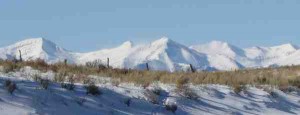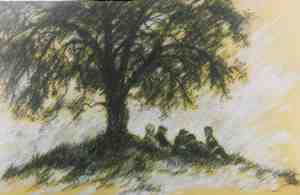Review by Ed Quillen
Railroads – February 2008 – Colorado Central Magazine
The Great Western Railway
by Kenneth Jessen
Published in 2007 by J.V. Publications
ISBN 1928656056
DESPITE ITS EXPANSIVE NAME, the Great Western Railway was confined to northern Colorado and boasted less than 100 miles of track that connected Loveland, Windsor, Eaton, Johnstown, and Longmont. We can connect it to Central Colorado because it was a subsidiary of the Great Western Sugar Co., whose founding investors at the start of the 20th century included Charles Boettcher and John F. Campion, both of whom started building their fortunes in Leadville.
The Great Western has long been a favorite of railroad buffs. It ran steam on its main line well into the 1960s. Until the spring of 1972, all its trains were “mixed trains,” so you could buy a round-trip ticket from Loveland to Longmont for $1.16, and ride in the caboose with the train crew — and if you wanted a cab ride, all you had to do was ask. Even after that, there were many special excursions, some powered by steam.
Indeed, you could see steam locomotives working regularly into the 1970s as saddle-tank dinky engines worked the yards, pushing loaded beet gondolas. But these locomotives were owned by the sugar company directly; they weren’t part of the Railway, even though the Railway was also owned by the sugar company. And once in early 1973, when I was hanging around the Loveland yards to take pictures of the dinky at work, its engineer invited me aboard. I got to toot the whistle, apply the throttle, and use the brakes. Thus I fulfilled a childhood ambition to drive a steam locomotive.
In this picture-filled book, Ken Jessen clearly explains the ownership distinction between those yard dinkies and the famous mainline steamers like No. 75 and No. 90, the decapod now working on the Strasburg Railway in Pennsylvania.
And Jessen provides much more, starting with a history of the sugar-beet industry in northern Colorado. Beets are heavy and bulky, and the roads of the day were wretched. Most farmers used horse and wagon. But getting beets to the mill required rail transportation, as did the operation of the mills, which needed vast quantities of coal and limestone. So as the sugar company developed, it built a railroad.
During beet harvest (“campaign” ), the beets had to be moved from the dumps (rail sidings with scalehouses where farmers deposited their beets) to the factory as quickly as possible, or else they would lose sugar content. Once at the mill, the beets were blasted out of the gondola cars with boiling water
We get a clear history of the line, along with detailed maps, as well as interesting sidetrips into movies that were shot with GW steamers on GW tracks, and how a rail bicycle came to be mounted atop the Johnstown depot.
THE MOST SURPRISING THING about the Great Western is that it was built to serve one industry, and that industry collapsed in the 1970s and ’80s, primarily because corn sweeteners had become cheaper than beet sugar. Great Western Sugar went bankrupt. But the railroad stayed in business, and it’s still going strong today as the Omnitrax Great Western (Omnitrax is a holding company of short-line railroads).
I would have liked to read more about modern traffic and operations on the Great Western, to find out how a line designed to haul sugar beets stayed in business when there were no more beets to haul nor sugar mills to haul them to.
But I’m pleased with what Jessen delivered: a decent history of a relatively obscure short line, along with maps and scores of pictures. It brought back some wonderful memories of being out on a Sunday drive with my parents in the fall, and seeing a cloud of coal smoke over the hill, and my dad heading that way so we could see old No. 90 chugging along.
Even if that’s not in your memory, if you’re a railroad buff or a Colorado buff, you’ll enjoy this book.


